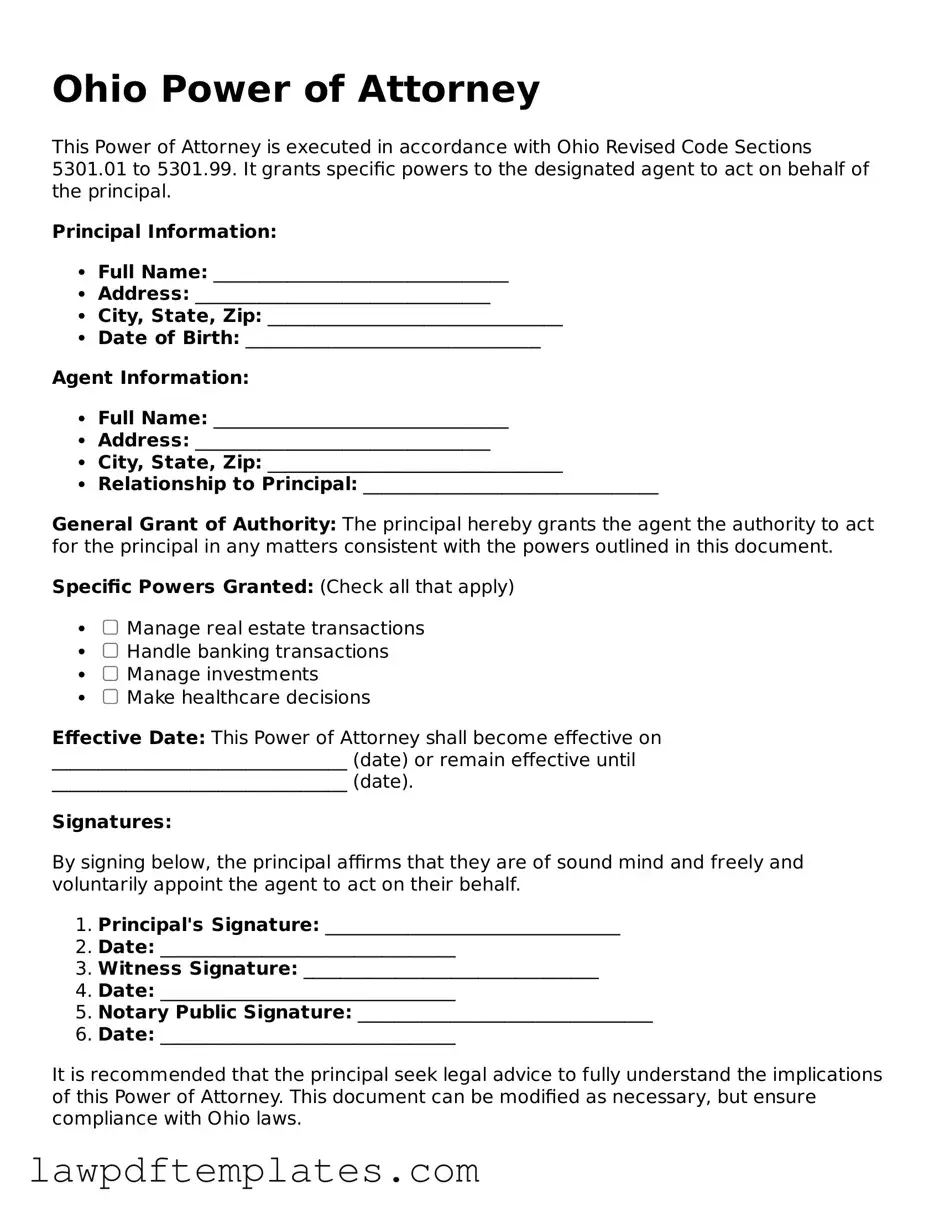Ohio Power of Attorney
This Power of Attorney is executed in accordance with Ohio Revised Code Sections 5301.01 to 5301.99. It grants specific powers to the designated agent to act on behalf of the principal.
Principal Information:
- Full Name: ________________________________
- Address: ________________________________
- City, State, Zip: ________________________________
- Date of Birth: ________________________________
Agent Information:
- Full Name: ________________________________
- Address: ________________________________
- City, State, Zip: ________________________________
- Relationship to Principal: ________________________________
General Grant of Authority: The principal hereby grants the agent the authority to act for the principal in any matters consistent with the powers outlined in this document.
Specific Powers Granted: (Check all that apply)
Effective Date: This Power of Attorney shall become effective on ________________________________ (date) or remain effective until ________________________________ (date).
Signatures:
By signing below, the principal affirms that they are of sound mind and freely and voluntarily appoint the agent to act on their behalf.
- Principal's Signature: ________________________________
- Date: ________________________________
- Witness Signature: ________________________________
- Date: ________________________________
- Notary Public Signature: ________________________________
- Date: ________________________________
It is recommended that the principal seek legal advice to fully understand the implications of this Power of Attorney. This document can be modified as necessary, but ensure compliance with Ohio laws.
